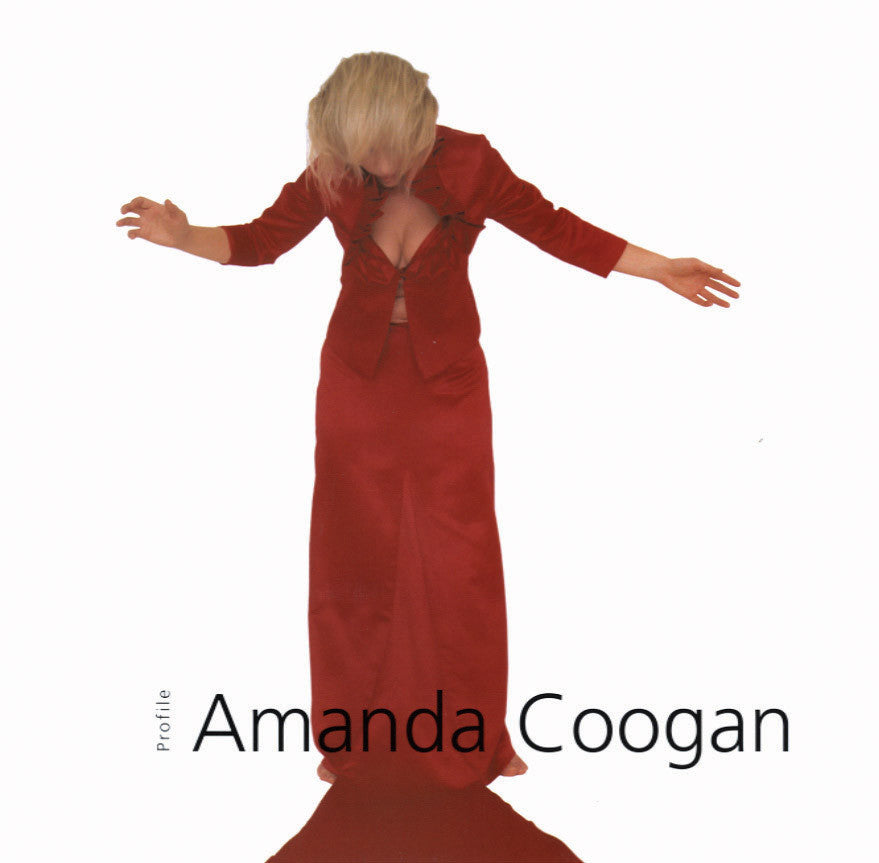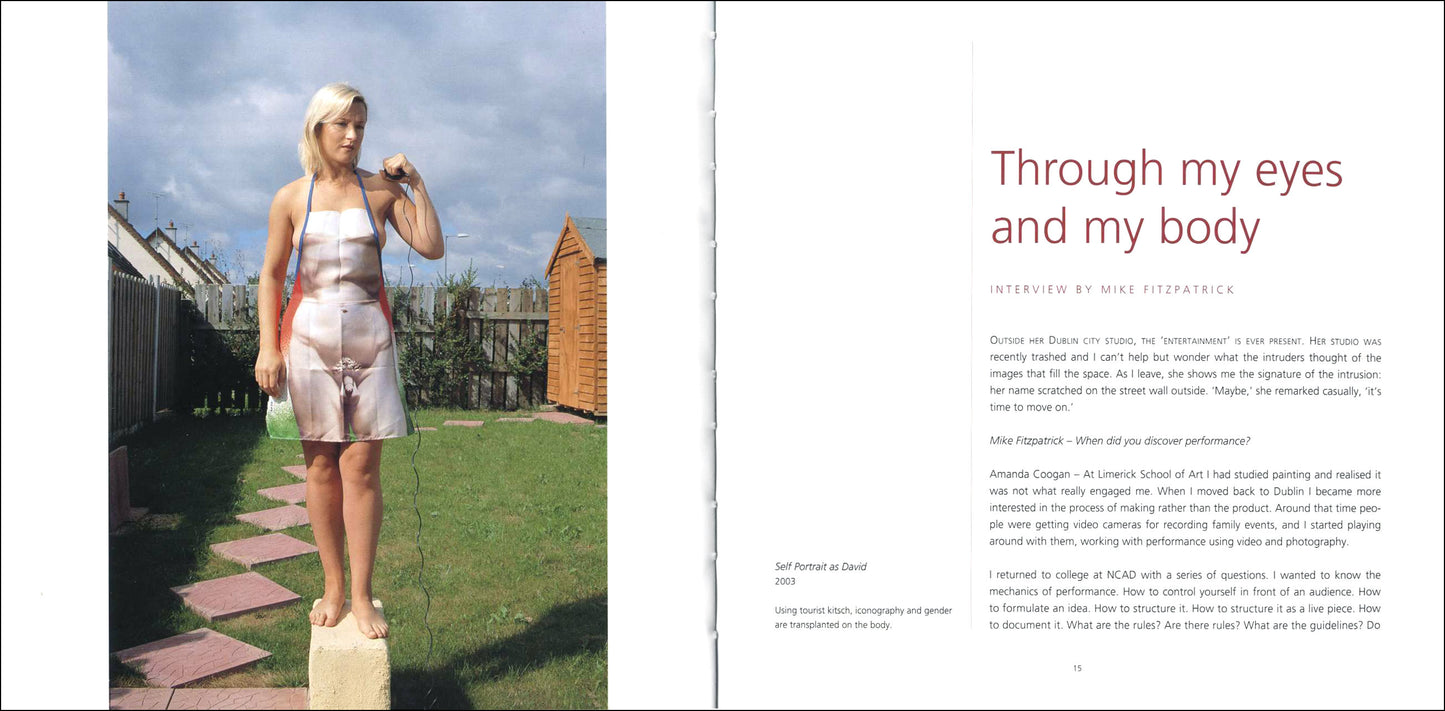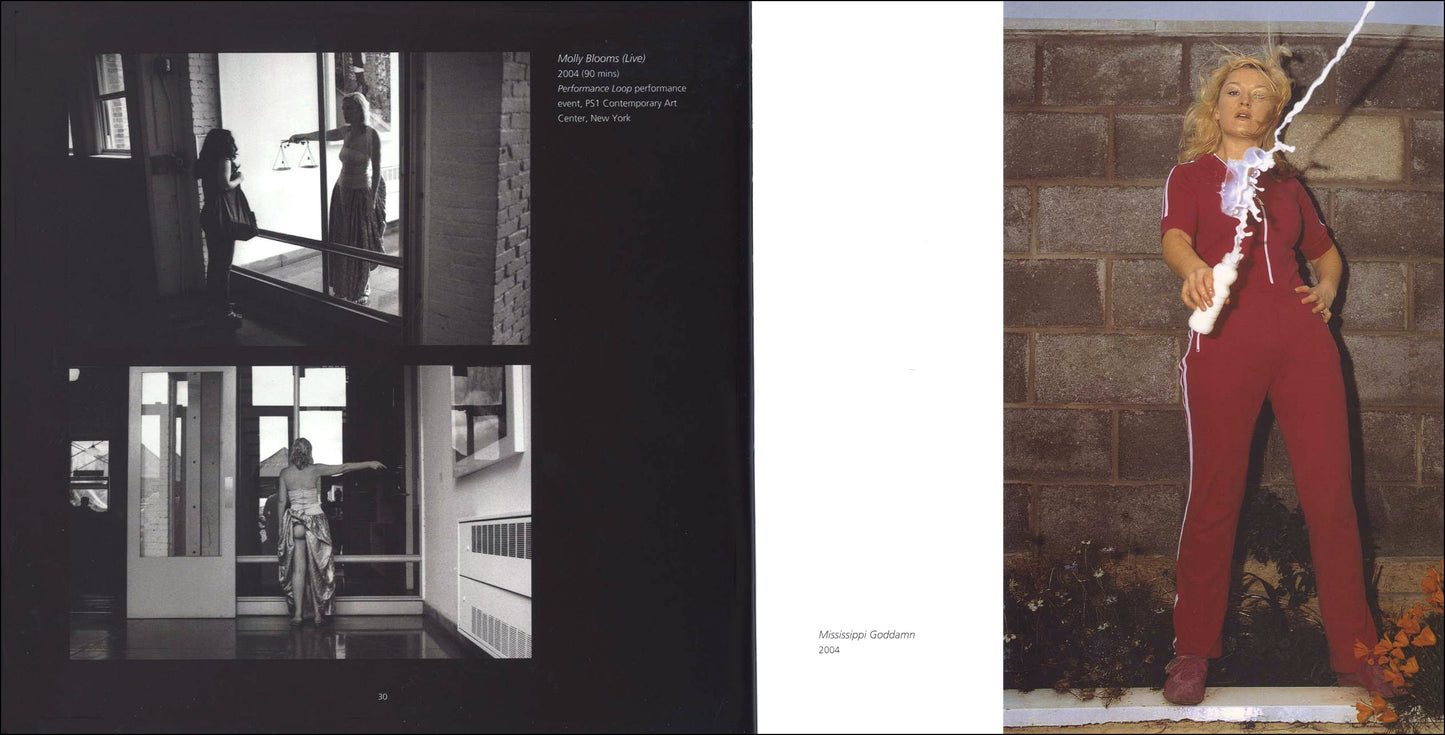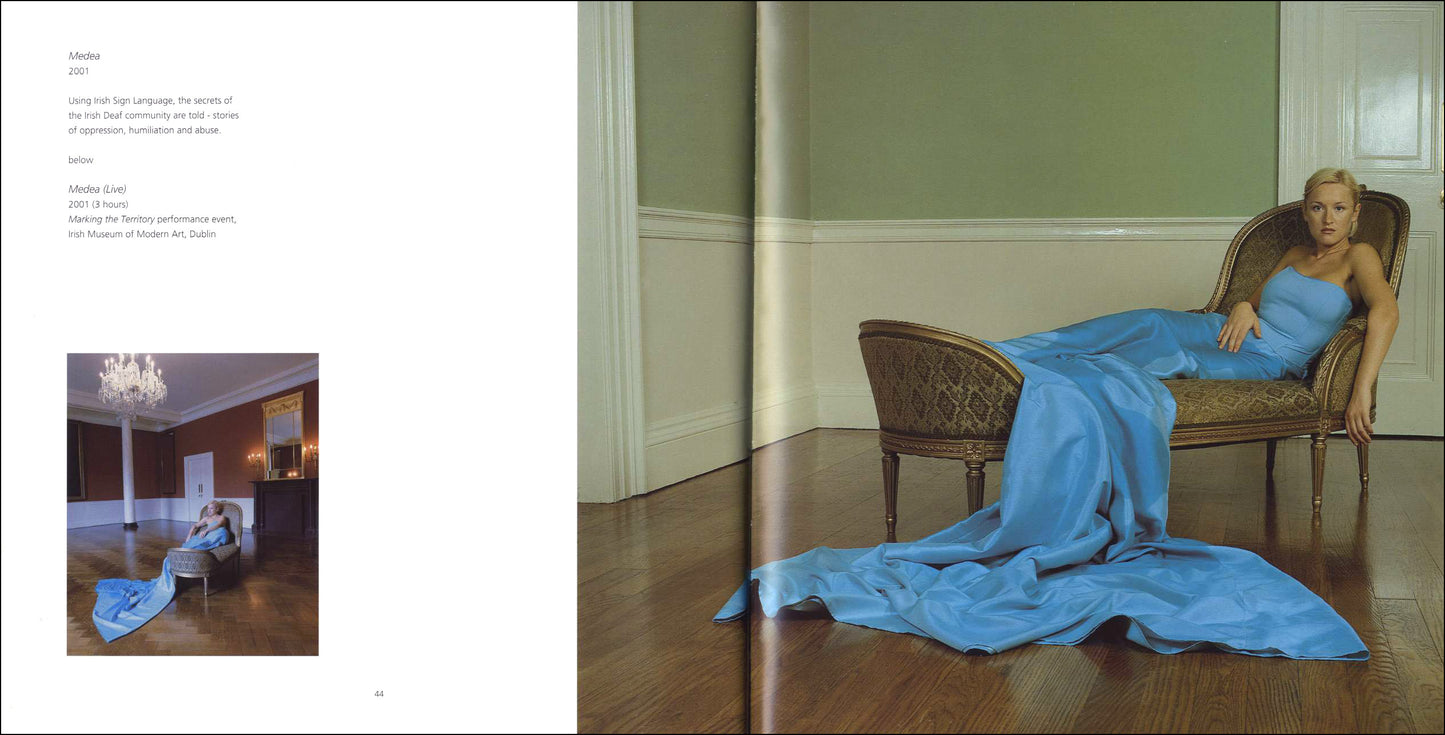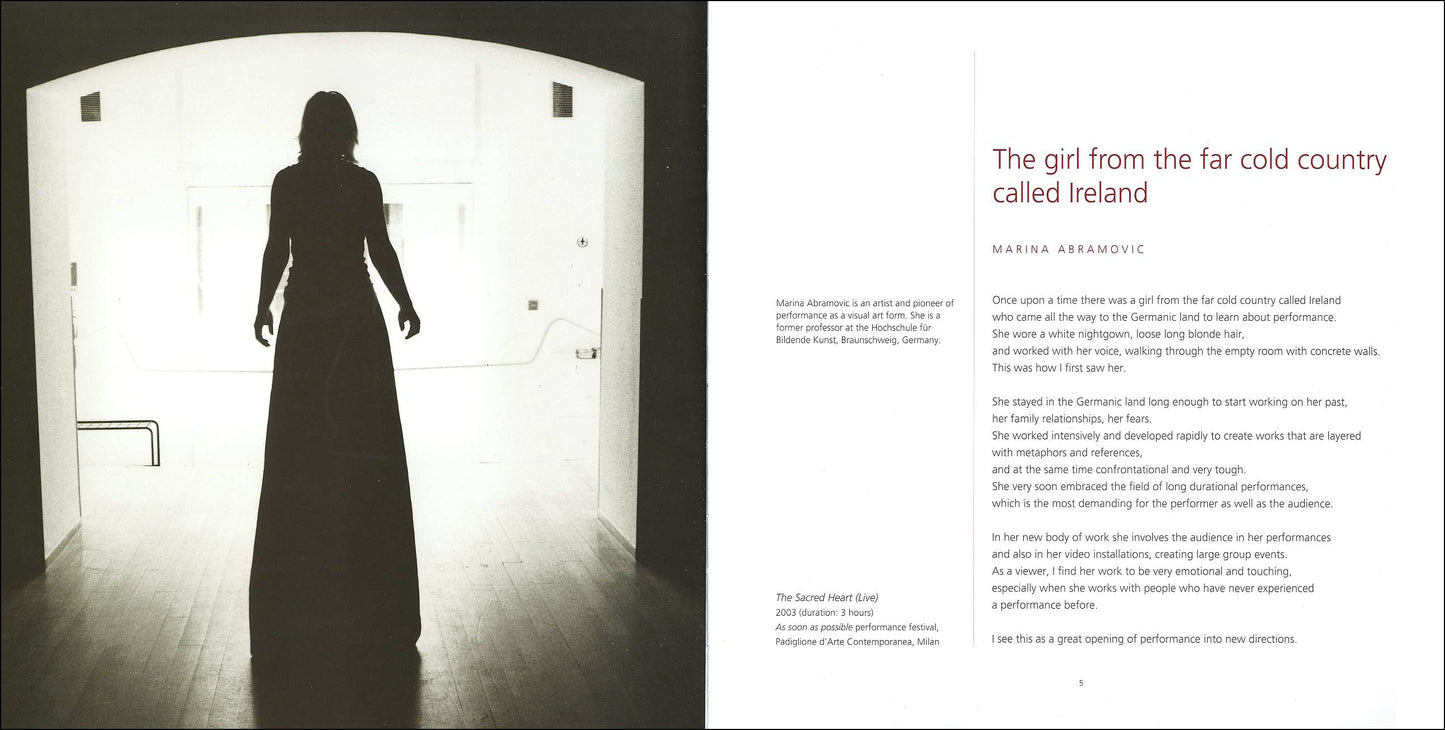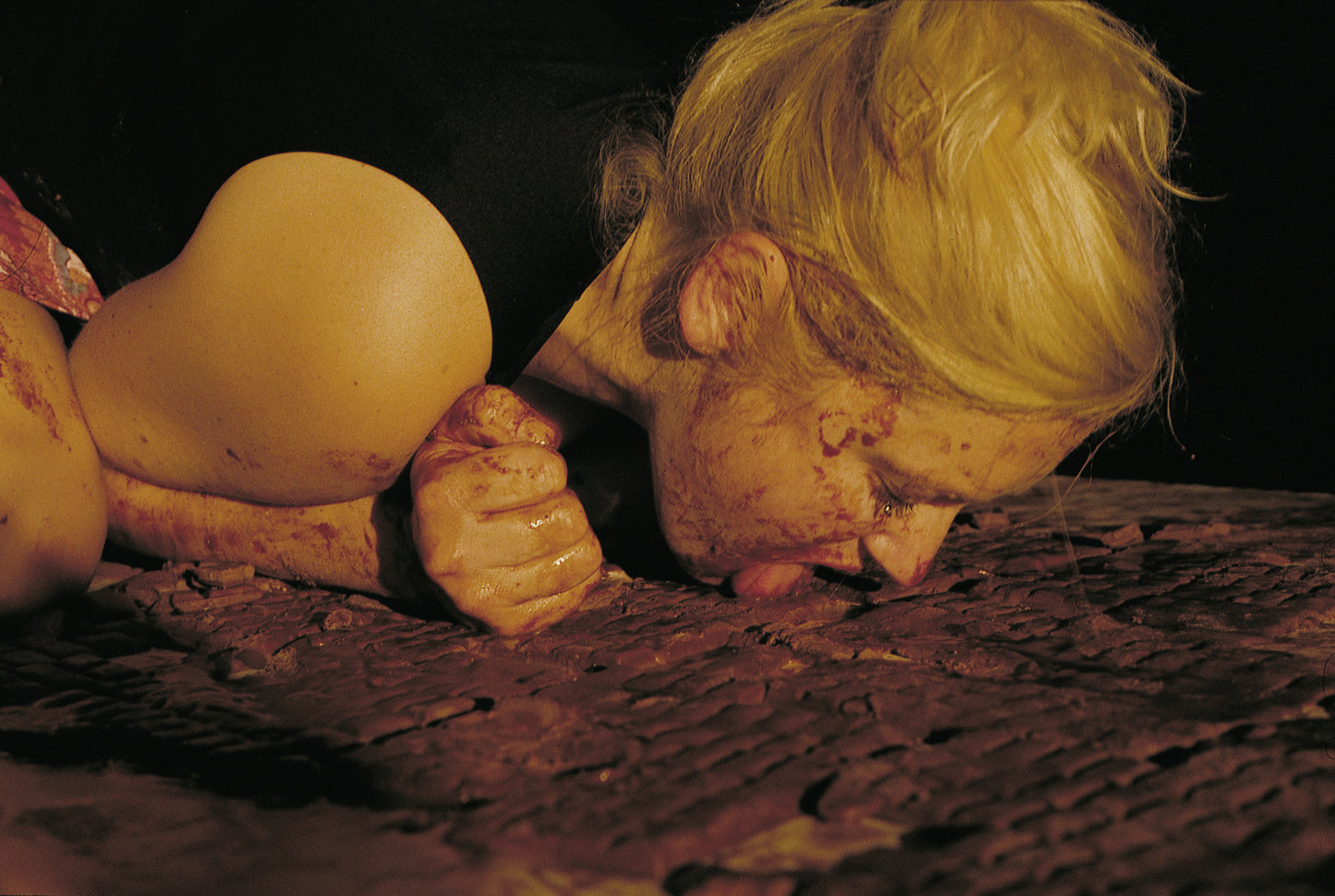Gandon Editions
Profile °21 – AMANDA COOGAN
Profile °21 – AMANDA COOGAN
Couldn't load pickup availability
Share
essays by Caoimhín Mac Giolla Léith, Apinan Poshyananda; interview by Mike Fitzpatrick; intro by Marina Abramovic
ISBN 978 0948037 177 72 pages (paperback) 22.5x22.5cm 92 illus
This book is a comprhensive look at the work of hugely successful performance artist Amanda Coogan. It also features an in-depth essays and extensive interview with the artist.
EXTRACTS
"Once upon a time there was a girl from the far cold country called Ireland who came all the way to the Germanic land to learn about performance. She wore a white nightgown, loose long blonde hair, and worked with her voice, walking through the empty room with concrete walls. This was how I first saw her. She stayed in the Germanic land long enough to start working on her past, her family relationships, her fears. She worked intensively and developed rapidly to create works that are layered with metaphors and references, and at the same time confrontational and very tough."
— from the introduction by Marina Abramovic
"A young, blonde woman with generously applied bright red lipstick, dressed in a low-cut white satin suit, dances to the driving beat of Gil Scott-Heron’s apocalyptic 1970s anthem The Revolution will not be Televised. Shot in stylised slow motion against a cool, off-white backdrop, her movements are fluent and vigorous, yet they fall short of total abandon. For, as she dances, she is simultaneously translating Scott-Heron’s angry but articulate lyrics into Irish sign language. Her fluid, free-form dance movements are interspersed with the codified hand gestures of a language unique to the deaf community of her native land. The ostensibly universal idiom of dance is forcibly modified to accommodate the silent language of a minority within a minority in a video whose soundtrack is inaccessible to the community most specifically addressed by its visual component.
Amanda Coogan’s three-minute video, Revolution (2002), is a pitch-perfect modulation of densely compacted allusion and visceral release. Originally designed for the internet as an intervention into the specific context of the politics of the deaf in an over-policed, trigger-happy US, Revolution gains in subtlety and complexity from the series of ironic displacements that ultimately resulted in this incongruous image of a white-suited white girl swaying to the urgent rhythms of a funk-soul, proto-rap track, first released when she was still a toddler, back in the heady days of Black Power, and smack in the middle of the golden age of Performance Art."
— from the essay by Caoimhín Mac Giolla Léith
"The energy transmitted between performer and audience is one that is very powerful and unique to the practice of performance. When an action is made to a live audience, there is a transfer of energy between the performer and the audience that lifts it beyond a normative, everyday action. It becomes imbued with a special power that can only happen in a live performance. During a three-hour performance of Reading Beethoven at PAC [Padiglione d’Arte Contemporanea], Milan in 2003, I broke through a physical barrier and soared beyond pain. A power or energy was transferred to the audience – they feed me and they feed from me. The energy looped between the performer and audience, and bounced around the building. The question of pain and endurance is a pertinent one here. The performer goes through the experience demanded by the performance not in a masochistic but hopefully in a shamanistic way."
— Amanda Coogan in conversation with Mike Fitzpatrick
|
CONTENTS THE GIRL FROM THE FAR COLD COUNTRY CALLED IRELAND introduction by Marina Abramovic 4-5 REVOLUTIONS PER MINUTE essay by Caoimhín Mac Giolla Léith 6-9 THE CELTIC SLANT essay by Apinan Poshyananda 10-13 THROUGH MY EYES AND MY BODY interview by Mike Fitzpatrick 14-19 COLOUR PLATES 20-65 List of illustrations / Artist’s biography |
